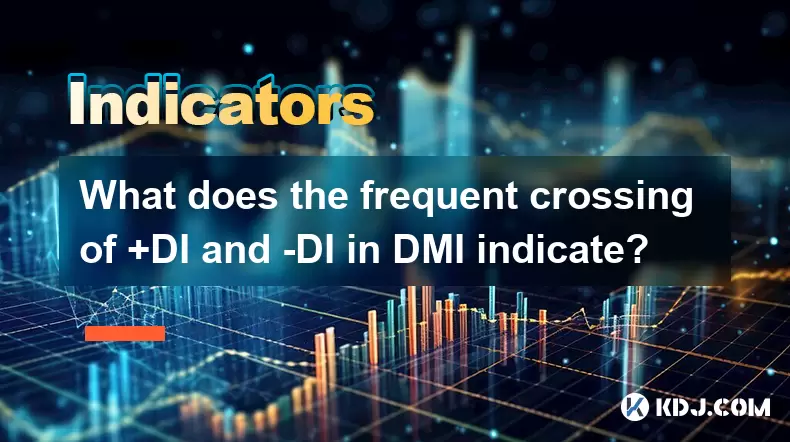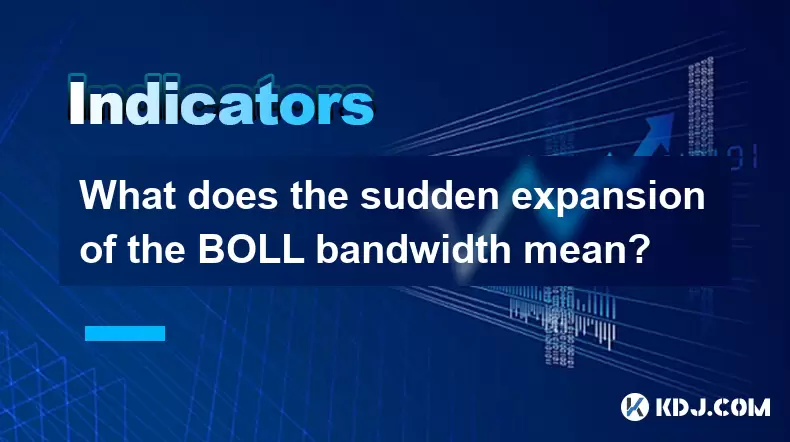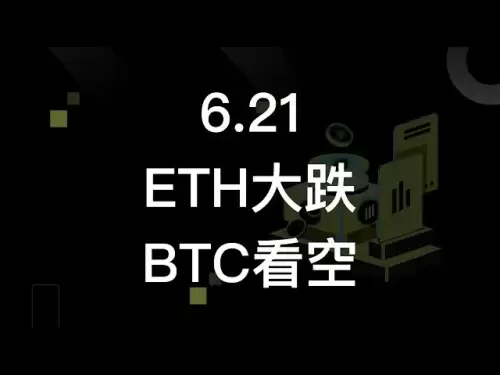-
 Bitcoin
Bitcoin $106,754.6083
1.33% -
 Ethereum
Ethereum $2,625.8249
3.80% -
 Tether USDt
Tether USDt $1.0001
-0.03% -
 XRP
XRP $2.1891
1.67% -
 BNB
BNB $654.5220
0.66% -
 Solana
Solana $156.9428
7.28% -
 USDC
USDC $0.9998
0.00% -
 Dogecoin
Dogecoin $0.1780
1.14% -
 TRON
TRON $0.2706
-0.16% -
 Cardano
Cardano $0.6470
2.77% -
 Hyperliquid
Hyperliquid $44.6467
10.24% -
 Sui
Sui $3.1128
3.86% -
 Bitcoin Cash
Bitcoin Cash $455.7646
3.00% -
 Chainlink
Chainlink $13.6858
4.08% -
 UNUS SED LEO
UNUS SED LEO $9.2682
0.21% -
 Avalanche
Avalanche $19.7433
3.79% -
 Stellar
Stellar $0.2616
1.64% -
 Toncoin
Toncoin $3.0222
2.19% -
 Shiba Inu
Shiba Inu $0.0...01220
1.49% -
 Hedera
Hedera $0.1580
2.75% -
 Litecoin
Litecoin $87.4964
2.29% -
 Polkadot
Polkadot $3.8958
3.05% -
 Ethena USDe
Ethena USDe $1.0000
-0.04% -
 Monero
Monero $317.2263
0.26% -
 Bitget Token
Bitget Token $4.5985
1.68% -
 Dai
Dai $0.9999
0.00% -
 Pepe
Pepe $0.0...01140
2.44% -
 Uniswap
Uniswap $7.6065
5.29% -
 Pi
Pi $0.6042
-2.00% -
 Aave
Aave $289.6343
6.02%
What does the frequent crossing of +DI and -DI in DMI indicate?
Frequent +DI/-DI crossings in the DMI often signal market indecision, especially in volatile crypto markets like Bitcoin or Ethereum, suggesting a lack of strong trend momentum.
Jun 21, 2025 at 05:14 pm

Understanding the DMI and Its Components
The Directional Movement Index (DMI) is a technical analysis tool used to identify the strength and direction of a trend. It consists of two lines: +DI (Positive Directional Indicator) and -DI (Negative Directional Indicator), along with the ADX (Average Directional Index) line which measures trend strength.
In cryptocurrency trading, where volatility can be extreme and trends often shift rapidly, understanding how these indicators behave is crucial. The frequent crossing of +DI and -DI is an event that traders closely monitor because it may signal potential reversals or changes in trend momentum.
+DI reflects upward movement, while -DI reflects downward movement.
When +DI crosses above -DI, it suggests increasing bullish momentum, potentially signaling a buy opportunity. Conversely, when -DI crosses above +DI, it implies growing bearish pressure, possibly indicating a sell signal.
What Does Frequent Crossing Mean?
Frequent crossings between +DI and -DI indicate a lack of clear directional bias in the market. This typically occurs during periods of consolidation, sideways movement, or high volatility without a dominant trend.
In the context of cryptocurrencies like Bitcoin or Ethereum, such frequent crossovers might appear during:
- Market indecision after a significant price move
- Range-bound trading phases following a breakout
- High-frequency trading activity creating false signals
These repeated crossings suggest that neither buyers nor sellers are gaining sustained control. Traders must interpret this behavior carefully, especially in markets where sudden news events or whale movements can distort short-term trends.
How to Interpret Crossings Within the DMI Framework
Interpreting the significance of +DI/-DI crossings requires analyzing them alongside the ADX line. ADX values above 25 generally indicate a strong trend, while values below 20 suggest a weak or non-trending environment.
For example:
- If +DI crosses above -DI and ADX is rising above 25, it could confirm the start of a new uptrend
- If -DI crosses above +DI but ADX remains below 20, the downtrend may lack conviction and result in a false signal
This dynamic is particularly important in crypto trading, where many assets experience prolonged ranging phases punctuated by sharp trending moves. Misinterpreting a crossover in a low ADX environment can lead to premature entries or losses.
Using DMI Crossovers for Trade Signals
Traders often use +DI and -DI crossovers as part of a broader strategy to generate trade signals. However, due to their sensitivity, these signals should not be used in isolation.
Here’s a detailed approach:
- Identify the crossover point on your chart
- Confirm the ADX level to assess trend strength
- Check for confluence with other indicators (e.g., RSI, MACD, support/resistance levels)
- Use candlestick patterns or volume spikes to validate the signal
- Set appropriate stop-loss and take-profit levels based on recent volatility
In fast-moving crypto markets, false breakouts are common. Therefore, using additional filters beyond DMI crossovers is essential for risk management.
Common Pitfalls When Interpreting DMI Crossings
Many traders fall into traps when interpreting frequent +DI/-DI crossings. One major mistake is treating every crossover as a valid trade setup. In reality, most of these signals occur during choppy conditions and fail to materialize into meaningful trends.
Another issue arises from time-frame dependency. A crossover on a 1-hour chart may conflict with the trend seen on a daily chart. Hence, aligning trades with the higher time frame is critical.
Moreover:
- Some traders ignore ADX readings, leading to poor-quality entries
- Others apply the DMI to highly volatile altcoins without adjusting parameters, causing erratic signals
- Lack of backtesting leads to overconfidence in unverified strategies
To avoid these pitfalls, always combine DMI with complementary tools and maintain strict risk controls.
Frequently Asked Questions
Q: Can I use DMI crossovers alone for trading decisions in crypto?
A: While DMI crossovers can provide useful insights, they are best used in conjunction with other indicators like RSI, MACD, or volume metrics to increase reliability.
Q: How do I adjust DMI settings for different crypto assets?
A: The default period for DMI is usually 14, but you can experiment with shorter periods (e.g., 7 or 10) for more responsive signals on highly volatile coins. Longer periods (e.g., 20 or 30) may work better for stablecoins or less active tokens.
Q: What does it mean if both +DI and -DI rise simultaneously?
A: This often indicates increasing volatility without a clear directional bias. It may precede a breakout, but until one indicator dominates, the trend remains undefined.
Q: Is the DMI suitable for all types of cryptocurrency trading strategies?
A: DMI is most effective in trend-following strategies. For scalping or arbitrage-based approaches, other tools may be more appropriate. Always match your indicators with your trading style.
Disclaimer:info@kdj.com
The information provided is not trading advice. kdj.com does not assume any responsibility for any investments made based on the information provided in this article. Cryptocurrencies are highly volatile and it is highly recommended that you invest with caution after thorough research!
If you believe that the content used on this website infringes your copyright, please contact us immediately (info@kdj.com) and we will delete it promptly.
- Matt Furie's NFT Mishap: When Pepe's Creator Met a Mint Exploit
- 2025-06-21 20:25:12
- Solana Meme Coins: A Comeback Story or a Flash in the Pan?
- 2025-06-21 20:45:12
- Telegram Scam Alert: $50M Crypto Loss in SUI, SEI, and NEAR – What You Need to Know
- 2025-06-21 20:25:12
- Bitcoin Solaris: The Next Big Thing in Blockchain Presales?
- 2025-06-21 20:45:12
- Wyoming, Stable Token, Cryptocurrency: A Cowboy State's Digital Frontier
- 2025-06-21 21:05:12
- Bitcoin's Bullish Signals and Optimism's Edge: A New York State of Mind
- 2025-06-21 21:25:12
Related knowledge

Does the sudden contraction of ATR indicate the end of the trend?
Jun 20,2025 at 11:14pm
Understanding ATR and Its Role in Technical AnalysisThe Average True Range (ATR) is a technical indicator used to measure market volatility. Developed by J. Welles Wilder, ATR calculates the average range of price movement over a specified period, typically 14 periods. It does not indicate direction—only volatility. Traders use ATR to gauge how much an ...

Is it invalid if the DMI crosses but the ADX does not expand?
Jun 21,2025 at 09:35am
Understanding the DMI and ADX RelationshipIn technical analysis, the Directional Movement Index (DMI) consists of two lines: +DI (Positive Directional Indicator) and -DI (Negative Directional Indicator). These indicators are used to determine the direction of a trend. When +DI crosses above -DI, it is often interpreted as a bullish signal, while the opp...

How to filter false signals when the SAR indicator frequently flips?
Jun 21,2025 at 08:43pm
Understanding the SAR Indicator and Its BehaviorThe SAR (Stop and Reverse) indicator is a popular technical analysis tool used in cryptocurrency trading to identify potential reversals in price movement. It appears as a series of dots placed either above or below the price chart, signaling bullish or bearish trends. When the dots are below the price, it...

Is the trend continuation when the Williams indicator is oversold but there is no rebound?
Jun 20,2025 at 11:42pm
Understanding the Williams %R IndicatorThe Williams %R indicator, also known as the Williams Percent Range, is a momentum oscillator used in technical analysis to identify overbought and oversold levels in price movements. It typically ranges from 0 to -100, where values above -20 are considered overbought and values below -80 are considered oversold. T...

What does the sudden expansion of the BOLL bandwidth mean?
Jun 21,2025 at 01:49pm
Understanding the BOLL IndicatorThe BOLL (Bollinger Bands) indicator is a widely used technical analysis tool in cryptocurrency trading. It consists of three lines: a simple moving average (SMA) in the center, with upper and lower bands calculated based on standard deviations from that SMA. These bands dynamically adjust to price volatility. When trader...

Is the golden cross of the ROC indicator below the zero axis effective?
Jun 20,2025 at 09:42pm
Understanding the ROC Indicator and Its Role in Cryptocurrency TradingThe Rate of Change (ROC) indicator is a momentum oscillator widely used by traders to assess the speed at which cryptocurrency prices are changing. It measures the percentage difference between the current price and the price from a certain number of periods ago. The ROC helps identif...

Does the sudden contraction of ATR indicate the end of the trend?
Jun 20,2025 at 11:14pm
Understanding ATR and Its Role in Technical AnalysisThe Average True Range (ATR) is a technical indicator used to measure market volatility. Developed by J. Welles Wilder, ATR calculates the average range of price movement over a specified period, typically 14 periods. It does not indicate direction—only volatility. Traders use ATR to gauge how much an ...

Is it invalid if the DMI crosses but the ADX does not expand?
Jun 21,2025 at 09:35am
Understanding the DMI and ADX RelationshipIn technical analysis, the Directional Movement Index (DMI) consists of two lines: +DI (Positive Directional Indicator) and -DI (Negative Directional Indicator). These indicators are used to determine the direction of a trend. When +DI crosses above -DI, it is often interpreted as a bullish signal, while the opp...

How to filter false signals when the SAR indicator frequently flips?
Jun 21,2025 at 08:43pm
Understanding the SAR Indicator and Its BehaviorThe SAR (Stop and Reverse) indicator is a popular technical analysis tool used in cryptocurrency trading to identify potential reversals in price movement. It appears as a series of dots placed either above or below the price chart, signaling bullish or bearish trends. When the dots are below the price, it...

Is the trend continuation when the Williams indicator is oversold but there is no rebound?
Jun 20,2025 at 11:42pm
Understanding the Williams %R IndicatorThe Williams %R indicator, also known as the Williams Percent Range, is a momentum oscillator used in technical analysis to identify overbought and oversold levels in price movements. It typically ranges from 0 to -100, where values above -20 are considered overbought and values below -80 are considered oversold. T...

What does the sudden expansion of the BOLL bandwidth mean?
Jun 21,2025 at 01:49pm
Understanding the BOLL IndicatorThe BOLL (Bollinger Bands) indicator is a widely used technical analysis tool in cryptocurrency trading. It consists of three lines: a simple moving average (SMA) in the center, with upper and lower bands calculated based on standard deviations from that SMA. These bands dynamically adjust to price volatility. When trader...

Is the golden cross of the ROC indicator below the zero axis effective?
Jun 20,2025 at 09:42pm
Understanding the ROC Indicator and Its Role in Cryptocurrency TradingThe Rate of Change (ROC) indicator is a momentum oscillator widely used by traders to assess the speed at which cryptocurrency prices are changing. It measures the percentage difference between the current price and the price from a certain number of periods ago. The ROC helps identif...
See all articles

























































































